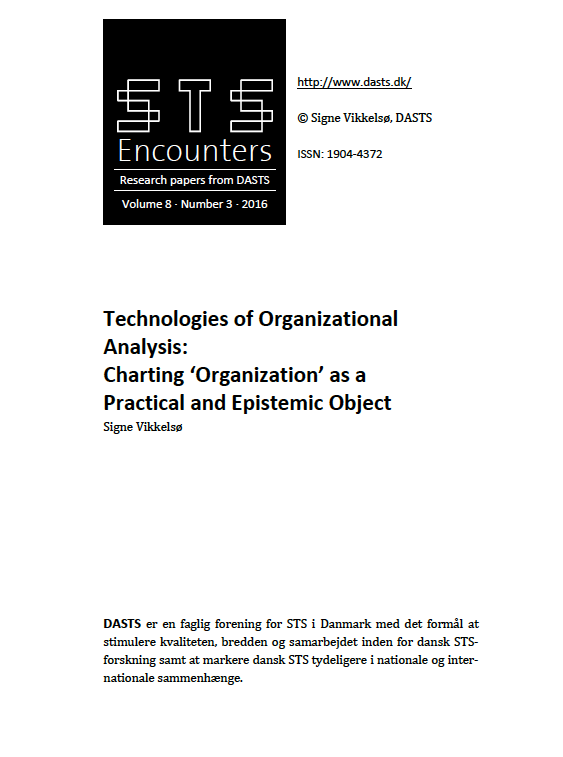Technologies of Organizational Analysis: Charting ‘Organization’ as a Practical and Epistemic Object
DOI:
https://doi.org/10.7146/stse.v8i3.135236Abstract
Historians of science Lorraine Daston and Peter Galison argue that any science “must deal with the problem of selecting and constituting ‘working objects’ as opposed to the too plentiful and too various natural objects” (2007: 19). In the paper, which is written for my inaugural lecture at Copenhagen Business School, I analyze the fate of the organization chart as a central working object in classic organization and management theory. By contrasting the way it was once used and discussed by classic authors such as Luther Gulick and Lyndon Urwick (1937) with the way organization charts were used in contingency theory and finally with their disappearance in contemporary organization studies and altered role in the selfrepresentation of modern organizations, I describe a history of changing forms of visualization in organization theory and managerial practice. I also discuss the practical and political consequences of this development.

Downloads
Published
How to Cite
Issue
Section
License

This work is licensed under a Creative Commons Attribution-NonCommercial-ShareAlike 4.0 International License.
Starting with volume 15, articles published in STS Encounters are licensed under Attribution-NonCommercial-ShareAlike 4.0 International (CC BY-NC-SA 4.0). The editorial board may accept other Creative Commons licenses for individual articles, if required by funding bodies e.g. the European Research Council. Previous articles are not licensed under Creative Commons. In these volumes, all rights are reserved to the authors of the articles respectively.




